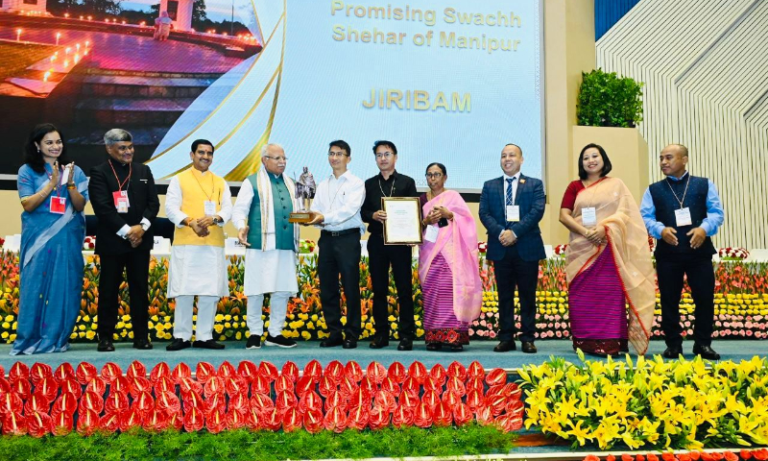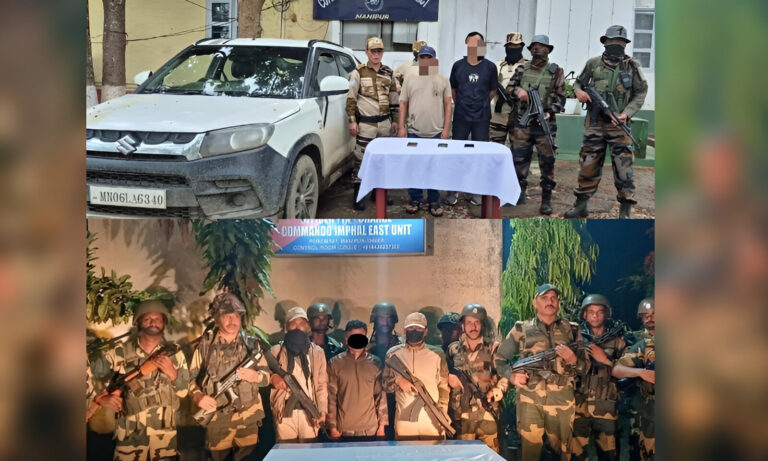Manipur Celebrates Shaphee Lanphee Day: Honoring Artisans and Preserving Cultural Heritage
Summary of the News
On December 19, 2024, Manipur observed the 13th Shaphee Lanphee Day, a celebration dedicated to honoring the artisans who preserve the traditional textile art of Shaphee Lanphee. Held at the residence of national awardee Maisnam Lalini Devi in Imphal East, the event commemorated the GI registration anniversary of Shaphee Lanphee. Artisans were recognized for their dedication to this intricate craft through the Smt. Phamdom Ningol Maisnam Ongbi Keinahanbi Devi Memorial Shaphee Lanphee Award 2024, emphasizing the importance of safeguarding this rich cultural legacy.
A Deep Dive into Shaphee Lanphee and Its Cultural Significance
Introduction: The Fabric That Tells a Story
Ever come across a piece of cloth that speaks volumes about a community’s history, bravery, and artistry? That’s exactly what Shaphee Lanphee embodies. It’s more than just a textile; it’s a woven testament to the tales of valor and tradition of the Meitei community in Manipur. From its intricate patterns to its deep symbolism, this fabric is a treasure trove of cultural pride.
But how did this ancient craft become such an integral part of Manipuri heritage, and why does it deserve to be celebrated? Let’s unravel the threads of its history, craftsmanship, and the ongoing efforts to keep it alive.
The Origins of Shaphee Lanphee: A Textile of Valor
Shaphee Lanphee has roots that trace back to the royal courts of Manipur. Historically, this textile was a token of honor—a fabric woven to commemorate bravery and service. Meitei kings would bestow Shaphee Lanphee upon warriors and Naga chiefs as a gesture of respect and recognition for their valor.
Its name, derived from “Shaphee” (fabric of animals and war), reflects its association with tales of courage. Each design element, whether it’s the embroidered motifs or the choice of colors, holds a unique narrative tied to the region’s culture and history.
A Milestone in Preservation: GI Registration
On December 19, 2011, Shaphee Lanphee achieved a significant milestone: it was registered under the Geographical Indication (GI) Act of India. This recognition wasn’t just a bureaucratic stamp; it was a lifeline for a dying art form. The GI tag ensured that this craft remained linked to its place of origin, protecting it from imitation and giving local artisans a competitive edge.
Why does this matter? Because it’s not just about preserving a fabric—it’s about safeguarding the livelihoods, traditions, and identity of the Meitei people.
The 13th Shaphee Lanphee Day: A Celebration of Legacy
The 2024 Shaphee Lanphee Day, held at Wangkhei Yonglan Leirak in Imphal East, was a heartfelt tribute to the artisans who keep this tradition alive. Organized at the residence of national awardee Maisnam Lalini Devi, the event was a reminder of the painstaking effort and dedication required to sustain this craft.
Key Highlights
- Award Ceremony: The Smt. Phamdom Ningol Maisnam Ongbi Keinahanbi Devi Memorial Shaphee Lanphee Award 2024 recognized artisans for their exceptional contributions.
- Cultural Pride: Speeches by notable figures emphasized the need to preserve such art forms in the face of modernization.
- Community Unity: Events like these foster a sense of belonging and pride among the local population.
Craftsmanship: The Art of Weaving Stories
How Is Shaphee Lanphee Made?
Creating Shaphee Lanphee isn’t just weaving—it’s storytelling with threads. The process involves:
- Hand-Spun Fabric: Traditionally, the base material is handwoven cotton.
- Intricate Embroidery: Patterns are embroidered using vibrant cotton threads. Each motif tells a story—of bravery, nature, or spirituality.
- Color Palette: The colors aren’t just decorative; they symbolize various aspects of life and culture.
Symbolism in Motifs
The motifs in Shaphee Lanphee are more than just pretty patterns. For instance:
- Animal Designs: Represent strength and connection to nature.
- War Symbols: Pay homage to the valor of Manipuri warriors.
Challenges Faced by Artisans
Despite its cultural significance, the production of Shaphee Lanphee is dwindling. Why? Here are some reasons:
- Decline in Skilled Artisans: With fewer young people taking up the craft, the knowledge is at risk of being lost.
- Lack of Raw Materials: The traditional materials required for authentic production are becoming scarce.
- Market Challenges: Competing with machine-made textiles often leaves artisans struggling to make ends meet.
Revitalizing the Craft: Community and Government Efforts
Grassroots Initiatives
Local organizations and community leaders are working tirelessly to breathe new life into this art form. From hosting workshops to encouraging youth participation, these efforts aim to reignite interest in Shaphee Lanphee.
Government Support
The government has introduced policies to:
- Provide financial aid to artisans.
- Promote Shaphee Lanphee at national and international exhibitions.
- Develop training programs for the younger generation.
Why Shaphee Lanphee Matters to the World
You might be wondering, “Why should I care about a fabric from Manipur?” Well, Shaphee Lanphee isn’t just about Manipur—it’s about preserving humanity’s cultural diversity. Each thread represents resilience, history, and the timeless bond between people and their heritage.
The Road Ahead: Keeping the Legacy Alive
To ensure that Shaphee Lanphee thrives in the years to come, it’s essential to:
- Encourage Local Artisans: By buying their products and recognizing their efforts, we can support their livelihoods.
- Raise Awareness: Educating the public about the cultural importance of Shaphee Lanphee can spark global interest.
- Invest in Preservation: From financial support to infrastructure development, investment in this craft is crucial.
Final Thoughts
Shaphee Lanphee isn’t just a fabric—it’s a piece of history, a symbol of identity, and a testament to the resilience of Manipuri culture. Celebrating Shaphee Lanphee Day is a step toward recognizing the importance of preserving such traditions, ensuring that future generations inherit a legacy rich in art and culture.
FAQs
- What is Shaphee Lanphee?
Shaphee Lanphee is a traditional handwoven textile from Manipur, known for its intricate embroidery and cultural significance. - Why is Shaphee Lanphee celebrated?
It’s celebrated to honor artisans and preserve the legacy of this ancient craft. - What challenges do Shaphee Lanphee artisans face?
They struggle with declining interest, scarcity of raw materials, and competition from machine-made textiles. - How is Shaphee Lanphee different from other textiles?
Its motifs carry deep cultural narratives, and it’s traditionally used to honor bravery and achievement. - What can we do to support this craft?
Buying authentic products, raising awareness, and supporting government initiatives can help sustain this tradition.



